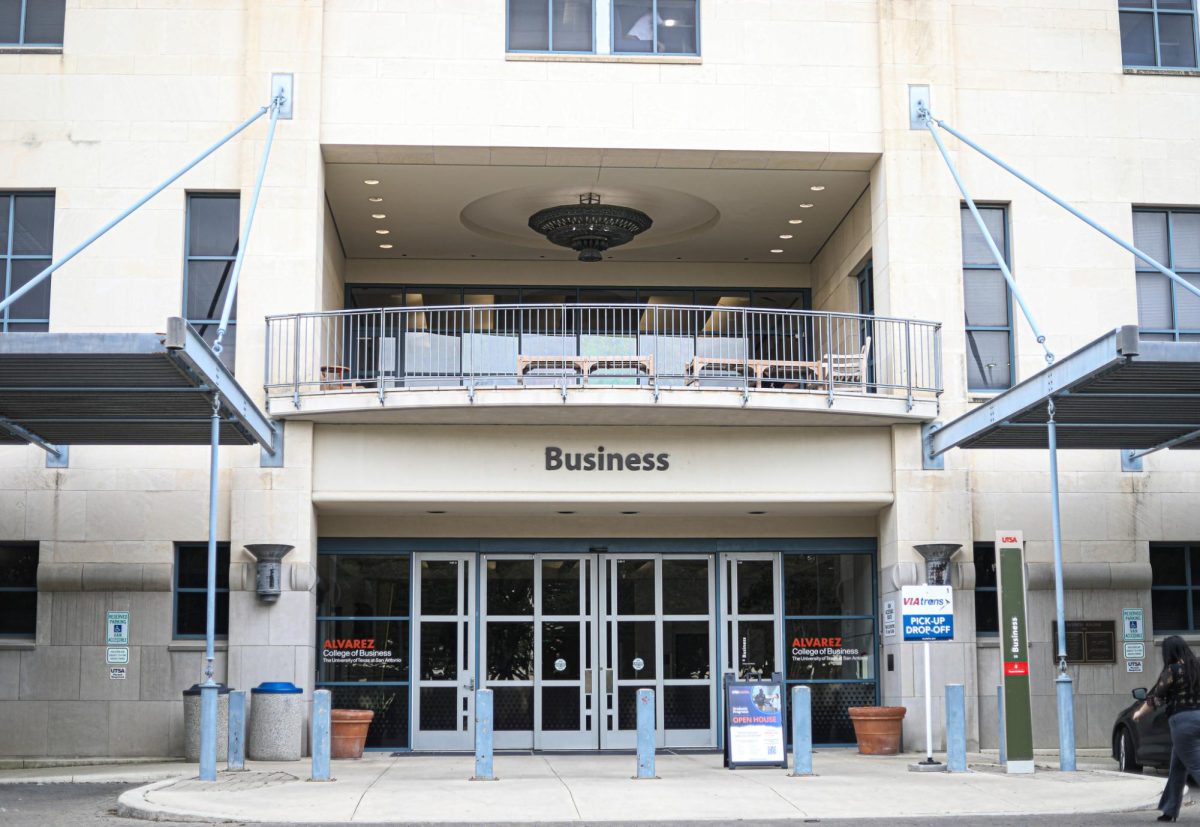
UTSA is one of seven universities jockeying for position as a tier-one research university. In his recent visit to UTSA, State Representative and Chair of the Higher Education Committee Dan Branch discussed how UTSA could win tier-one status before UT El Paso, UT Dallas, UT Arlington, University of Houston and Texas Tech University.
The American Association of Universities (AAU) has a set of benchmarks that determine which universities have tier-one status. Of the 60 tier-one colleges in the U.S., only three universities in Texas meet the rigorous demands of the AAU: UT Austin, Texas A&M and Rice University.
“One of the metrics is if a university brings in $100 million in research grants,” Branch said.
The seven emerging universities raise between $10 million to $60 million in grants. According to a university release, UTSA finished 2008 with $51.8 million in research grants.
“We tried to set up in our House Bill 51, a series of metrics that align with outside standards. Along the way we put in a number of incentives. One of those was if a university gets a national federal grant they may be eligible for a match of state dollars,” Branch said.
“Another is called Proposition 4 and is subject to a constitutional amendment; it is designed to re-purpose a dormant pool of money for the seven schools that are competing for tier one status.”
The combination of the programs provided by the Texas Legislature amounts to approximately $700 million and is designed to encourage competition among the seven emerging universities.
“The best way to get tier-one status is to build prestige by having a quality faculty, quality students, unique assets and innovative research,” Branch said.
UTSA is taking steps in the right direction.
“Take your cyber security guy (Executive Director and Chair of the Institute for Cyber Security, Ravinderpal “Ravi” Sandhu). He is really hot, you guys pulled him from George Mason University, and he brought with him a $3 million dollar grant,” Branch said.
Branch explained that industry leaders realize the importance of getting close to Sandhu because he is going to mentor the students who will keep data secure.
“Everyone cares about secure data now,” Branch said.
If UTSA wants to be a tier-one university, Branch said, it must use innovative approaches to draw in experts in various fields.
“Experts look for a university that will give them space and a laboratory to conduct their research, and bring faculty members, grad students and grants with them,” Branch said.
Any unique asset will play a crucial role in helping UTSA reach tier-one status and will also draw additional faculty. One such asset is the JEOL Microscope UTSA will receive this fall.
Branch said that some people would put Texas Tech and the University of Houston in the lead because they are older and larger schools.
“I think UTSA is doing quite well. I think you guys are the youngest college on the list (of emerging tier-one) and have quickly caught up to Tech and Houston,” he said.
One area of growth is resident life.
Branch explained that he was impressed with the Student Government Association (SGA) plan to help maintain the shuttle system.
“We are working to get local, private apartment buildings who advertise that they have a free UTSA shuttle for residents, to pay a fee to continue the service,” Josh Bart, secretary of SGA, said.
Branch understands that UTSA needs more facilities.
SGA agrees with Branch but gave examples of UTSA using current facilities to their maximum potential.
Vasooda Kumar, business affairs chair of the SGA, gives the example of the library’s use of pagers to inform students when study rooms and reserved books are ready.
“It’s one of those old school pagers,. The message says, ‘Room is ready,’ and you just go to the JPL and get your key for the study room,” Kumar said.
“The message I’d like to convey is I hope you will teach other universities and us how to be as with the facilities that UTSA is. You have learned a lot of lessons because you don’t have enough [facilities],” Branch said.
UTSA is traditionally known as a commuter school that tailors toward the non-traditional student.
“Every university has more non-traditional students, I think they need to be more creative with night and weekend use of facilities,” Branch said.











